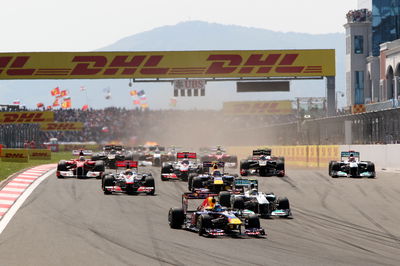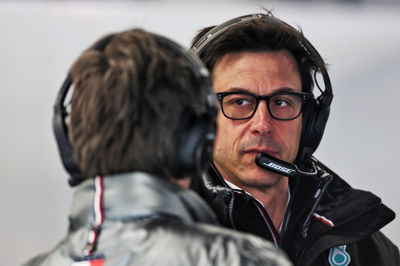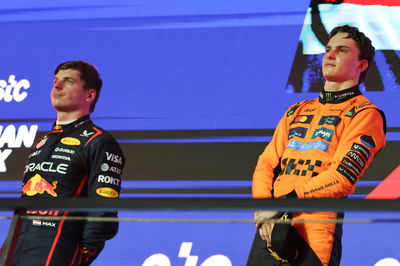Tracks that should be on the F1 calendar
Amid the prolonged suspension of the 2020 Formula 1 season due to the coronavirus crisis, Crash.net considers some of the best tracks not on the calendar which we feel should be.
Istanbul
Istanbul Park is regarded by many as one of the great lost F1 tracks. Located to the east of Istanbul, the circuit hosted the Turkish Grand Prix for seven years between 2005 and 2011 before financial disagreements resulted in the venue disappearing from the calendar.

Amid the prolonged suspension of the 2020 Formula 1 season due to the coronavirus crisis, Crash.net considers some of the best tracks not on the calendar which we feel should be.
Istanbul
Istanbul Park is regarded by many as one of the great lost F1 tracks. Located to the east of Istanbul, the circuit hosted the Turkish Grand Prix for seven years between 2005 and 2011 before financial disagreements resulted in the venue disappearing from the calendar.
The track is anti-clockwise and 5.338kms in length, featuring 14 turns including the fast, sweeping Turn 8 that included four apexes and made Istanbul famous, with the corner compared with legendary turns such as Eau Rouge at Spa-Francorchamps and Suzuka’s 130R.
Istanbul was considered one of the best tracks to be created by well-known F1 circuit designer Hermann Tilke, and was a favourite among fans and drivers, providing the latter with a constant test.
The circuit was also the scene of its fair share of drama during its tenure hosting F1 races, including the infamous collision between Red Bull teammates Sebastian Vettel and Mark Webber and the subsequent scrap for victory involving McLaren pairing Lewis Hamilton and Jenson Button.
Imola
The Autodromo Internazionale Enzo e Dino Ferrari, otherwise known as Imola, played host to the Italian Grand Prix on one occasion in 1980, before becoming the home of the San Marino Grand Prix, which was held every year between 1981 until 2006.
Imola underwent significant track changes in a bid to improve safety following F1’s darkest weekend in 1994, which was marred by tragedy. First, Rubens Barrichello suffered a heavy crash and was fortunate to escape without serious injury, before Roland Ratzenberger and Ayrton Senna were killed in separate incidents during qualifying and the race.
Among the most significant changes was the introduction of a chicane and complete re-profiling of the once flat-out Tamburello corner at which Senna crashed.
Major revisions may have taken away much of the challenge and thrill of the old track, but Imola remained both a popular venue and circuit for the drivers.
With Monza continuing to stage the Italian Grand Prix, San Marino is unlikely to return to the F1 schedule, however, the circuit owners submitted a bid to replace the 2020 Chinese Grand Prix pending its cancellation in the wake of the COVID-19 coronavirus outbreak that has resulted in the suspension of racing.
Sepang
Another favourite among those designed by Hermann Tilke was introduced to the calendar in 1999 and staged the Malaysian Grand Prix 19 times until 2017 when rising hosting fees and declining ticket sales meant a new deal was not sought following the expiry of its contract in 2018.
With its fast, sweeping corners and unpredictable weather conditions, Sepang always had the potential to conjure up an entertaining race or a surprise result. A mix of high-speed and slower, complex sections, mixed with hot and humid conditions helped provide a real test for drivers and their machinery.
Much like the tropical thunderstorms, drama never seemed too far away. Whether it be the extreme downpour which shortened the 2009 race, or the 2013 ‘multi-21’ drama between Red Bull teammates Sebastian Vettel and Mark Webber, or Lewis Hamilton’s heartbreaking engine failure while leading in 2016, Sepang certainly had the potential to keep you on the edge on your seat.
Portimao
The Portuguese Grand Prix was an ever-present on the F1 calendar between 1984 to 1996 when Estoril hosted the race, but Portimao never quite made it to host grand prix racing.
Situated in the Algarve region of southern Portugal, the 4.692kms Autodromo Internacional do Algarve circuit has held a number of top flight motorsport series over the years including Superleague Formula, GP2, A1 Grand Prix, World Superbikes, and GT racing.
But F1 has only visited the Iberian Peninsula for testing in 2008 and 2009 as it made the most of the popular destination due to the warm climate and close proximity to both local hotels and airports.
The track received a boost to any hopes of one day hosting F1 races after being awarded an FIA Grade 1 category licence, opening up the opportunity to join the grand prix calendar in the future.
Kyalami
Kyalami hosted 20 F1 races between 1967 and 1993 as the home of the South African Grand Prix before it slipped into decline and disappeared from the calendar.
But recent major redevelopment since 2014 has thrust Kyalami back into the equation as a possible F1 venue in the future, after the revised circuit received FIA Grade 2 standard.
The new Kyalami Circuit still runs anti-clockwise as it did when F1 returned in 1992 following a seven-year absence and has a sequence of corners from the fast right-hander at Sunset through to the Esses that formed a section of the original layout.
An attempt to replicate the original Kyalami has been made with the extension of the famous start-finish straight which includes The Kink, known as the location of the fatal accident that claimed the lives of Tom Pryce and race marshal Frederick Jansen van Vuuren during the 1977 South African Grand Prix.
Despite not being as fast as the original layout, the redevelopment work has helped Kyalami become a more attractive proposition to a Liberty Media-owned F1 that is seeking to expand the popularity of the sport with a mix of new locations and traditional venues.
Watkins Glen
With F1 owners Liberty Media determined to add a second fixture in the United States to boost the sport’s popularity in the country alongside its Austin-based Circuit of the Americas round, why not return to some classic roots at Watkins Glen?
A glamour destination at Miami is the location highly sought after by F1, although local resistance has slowed plans for a Miami Grand Prix. But at the southern tip of Seneca Lake in New York lies a venue that quickly became a key fixture on the F1 calendar following its introduction in 1961.
Watkins Glen International, nicknamed “The Glen” was the home of the United States Grand Prix for 20 consecutive years and has been a popular circuit among fans and drivers, although in recent times it has became affiliated with sportscar racing and IndyCar.
The fast and undulating track has been modified over the years due to safety concerns, especially after the fatal crashes of Francois Cevert in 1973 and J.D McDuffie in 1991. The track would need further changes to meet F1 standards - with its current FIA Grade 2 listing - but could provide F1 with a great second venue.
Circuits such as Brands Hatch and the Nurburgring’s Nordschleife were among those considered but ultimately got omitted because they are realistically never being able to host F1 races again due to logistical and safety reasons.












